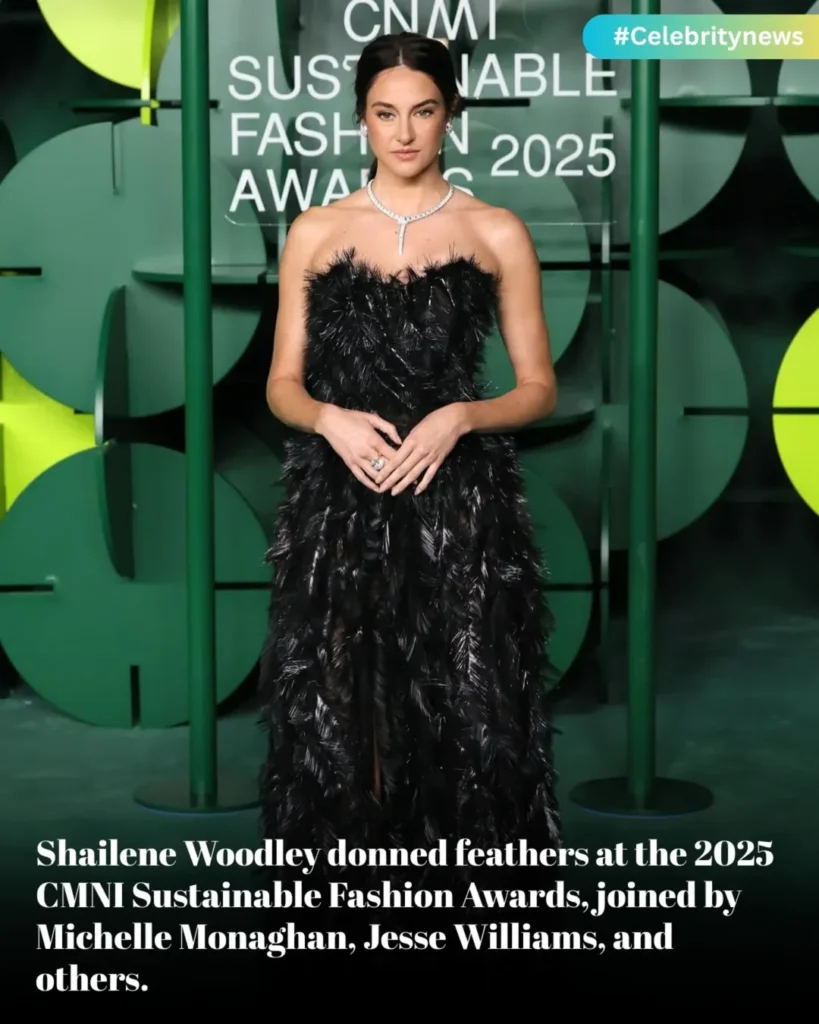Wings on the Red Carpet
When the doors to Teatro alla Scala opened on September 27, Milan’s stage became more than a theater—it became runway, forum, and statement. Among the luminaries that night, Shailene Woodley emerged as a visual poem. Her black gown, layered with featherlike ruffles and sculpted textural drama, seemed to flutter even without wind. It was a bold gesture: not just dress as decoration, but dress as message.
That night she was not one among many. She was a central current. The dress did more than catch eyes—it demanded them. With her silhouette traced in shadow and light, Woodley walked the red carpet not simply as star, but as advocate: Olympic in poise, political in presence.
Feathered Fabric, Meaningful Material
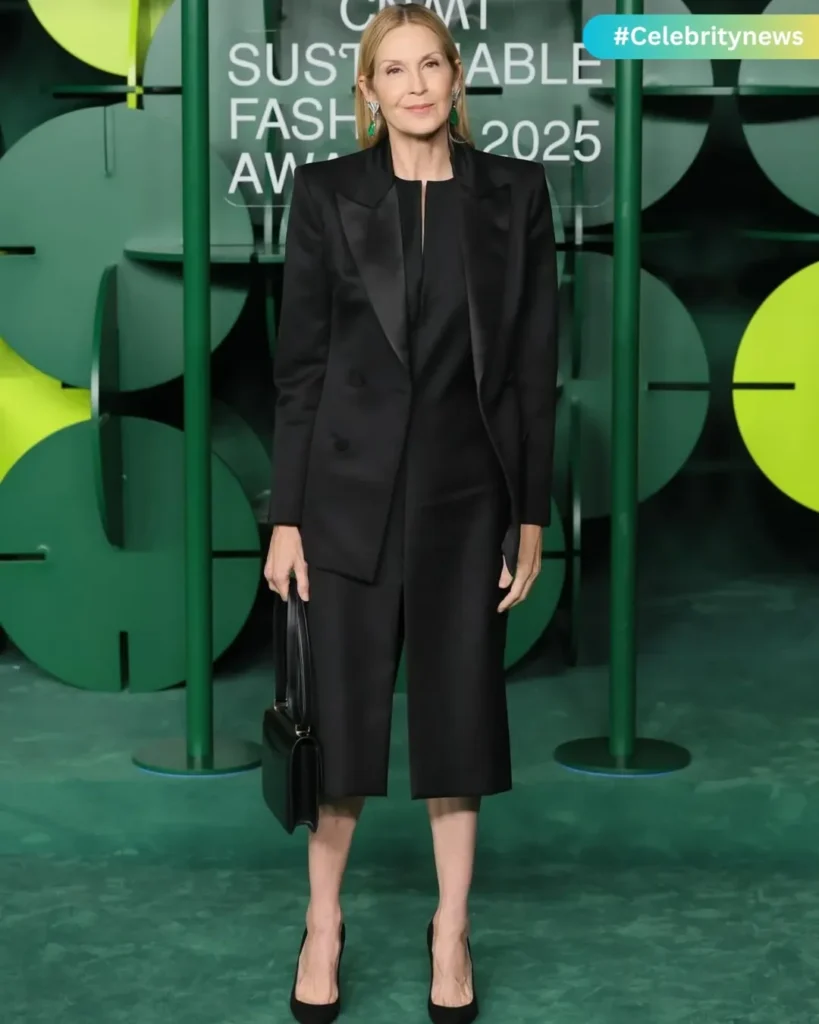
The gown is said to be archival Fendi couture, drawn from their Fall 2019 collection—an archival selection chosen for both aesthetic and ethical impact. Rather than chase runway trend, Woodley looked backward to look forward. In that choice lies a philosophy: reusing, recontextualizing, honoring craftsmanship rather than discarding it. The layers of tulle and ruffled texture suggest feathers at a glance, but their structure is deliberate. It’s not frivolous plumes—it’s engineered drama.
In an era when “sustainable fashion” can sometimes mean watered-down promises, her dress lacked dilution. It was intense, layered, fierce. The texture created movement—but also conversation. How do we honor beauty without depleting ecosystems? How do we reconcile glamour with ecological responsibility? That dress didn’t attempt to dazzle obliviously. It tried to provoke awareness.
Shared Stage, Shared Vision
Woodley was not alone. The awards drew names like Michelle Monaghan, Jesse Williams, Kelly Rutherford, and more—figures whose presence signals that style and conscience need not be separate lanes. Monaghan arrived in a pleated sage-green chiffon gown that whispered rather than roared. It suggested gentleness and stillness in contrast to Woodley’s bold black wings. Together, they formed a contrast of light and shadow—different expressions of sustainable aesthetic.
Jesse Williams himself announced the Diversity & Inclusion Award, handing it to Willy Chavarria—bringing presence and social accountability into fashion. Michelle Monaghan, presenting for the emerging designer prize, anchored feminine elegance with intention. These were not cameos; these were voices. The fashion was backdrop to message. The red carpet was not opulence—it was platform.
Hosting With Heart & Purpose

Woodley also took on hosting duties that evening. As more than a styled figure on the carpet, she guided the event’s narrative through tone, introduction, presence. Her role amplified her symbolism: she could inhabit couture, but she also shoulders responsibility. She understands fashion as intersectional: art, politics, environment. She bridged performance and purpose.
The event itself was a tribute to legacy, regeneration, and values. Giorgio Armani, who had recently passed, was honored with a Legacy Award. Anna Wintour led the tribute, and the ceremony wove in artisan recognition, circular economy awards, social impact honors. Woodley’s hosting voice wasn’t silent in that tapestry—it was its thread.
The Awards, the Ethos, the Evening
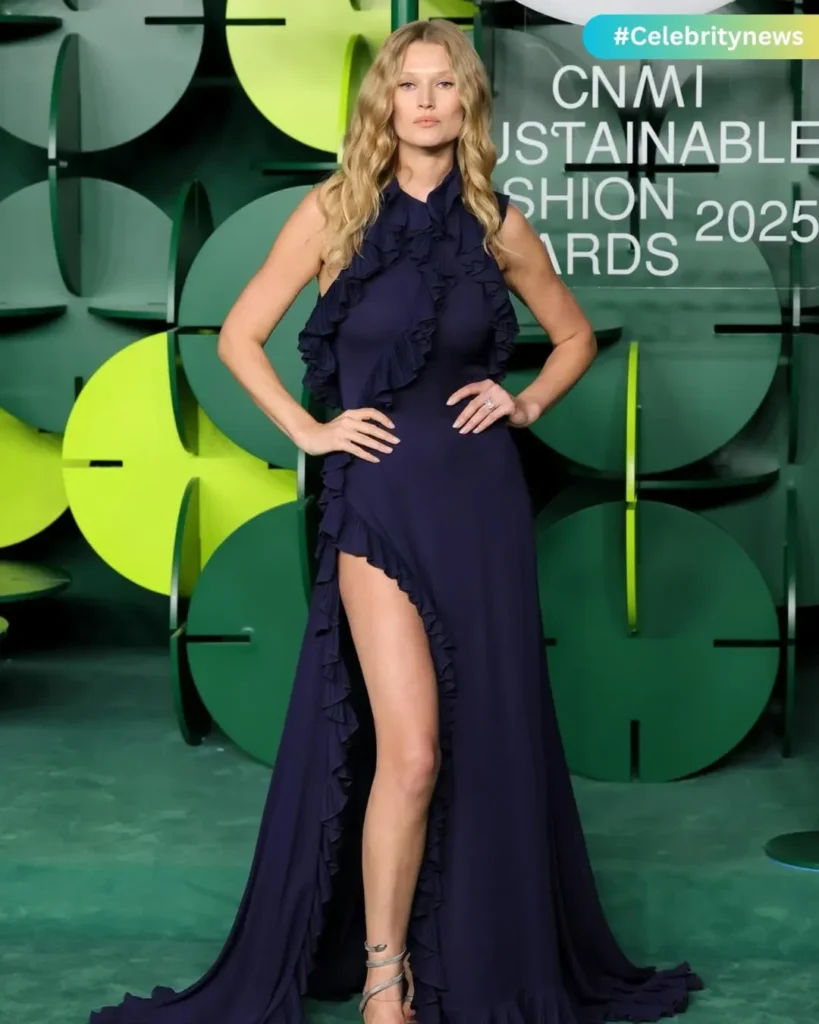
The CNMI Sustainable Fashion Awards 2025 recognized a series of categories: biodiversity, circular economy, human capital, and more. Woodley herself presented the SFA Biodiversity & Water Award to Anna Zegna and Alessandro Sartori of Ermenegildo Zegna, reinforcing her role not just as guest, but as steward. cameramoda.it+1
Monaghan presented the Emerging Designers award for The Sake Project on behalf of the Bicester Collection. Jesse Williams handed the Diversity & Inclusion Award to Chavarria. Together, they moved awards across disciplines, driving home that sustainability is not one narrow lane—it’s ecosystemic.
Amid those acknowledgments, Roberto Bolle danced Boléro on a minimal stage, a gesture of beauty in simplicity. The tribute to Armani allowed fashion’s past and future to converse. The evening was not just bound in gowns—it was bound in values. Balich Wonder Studio+2milanoluxurylife.it+2
Reunions, Reminders, Resonance
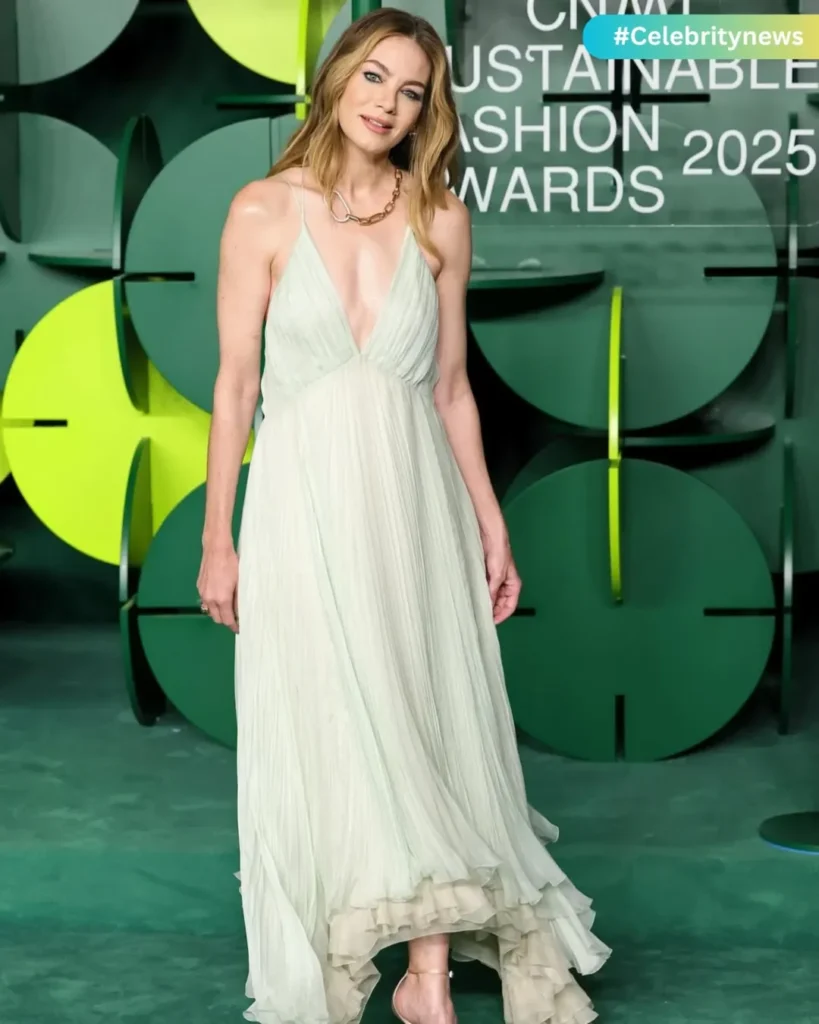
As cameras flashed and guests clustered, there were quiet moments of alignment. Moments when Woodley’s gaze passed to Monaghan. When Williams shook hands. When designers behind-the-scenes watched their work honored. Those punctuated the night: not spectacle, but resonance.
The contrast of styles—the black textured drama vs. sage chiffon whisper—became symbolic of the conversation within sustainable fashion: bold choices and quiet ones, grand gestures and subtle ones. No single ethos dominates. That multiplicity is part of the point.
Woodley—and her peers—showed that sustainable fashion is not about uniformity. It’s about range. It’s about telling many stories through many materials, many shapes, many voices.
The Risks in Beauty
Some critics cautioned that the feather effect felt excessive, or delicate to wear. One style commentary described the look as “annoying to wear” or “wildly overdone.” Tom + Lorenzo But perhaps that’s the point: beauty can entail risk. Responsibility can demand discomfort. A dress that intimidates, that challenges wearability, invites conversation about where boundaries lie in responsibility, in aesthetics, in identity.
Part of sustainable fashion’s struggle is marrying intention with appearance. If the dress is too radical, it risks alienation; if too safe, it risks blandness. Woodley’s choice leans toward confrontation. It asks: when the spotlight falls, will we use it to comfort ourselves—or to push change?
The Afterglow & the Narrative Ahead
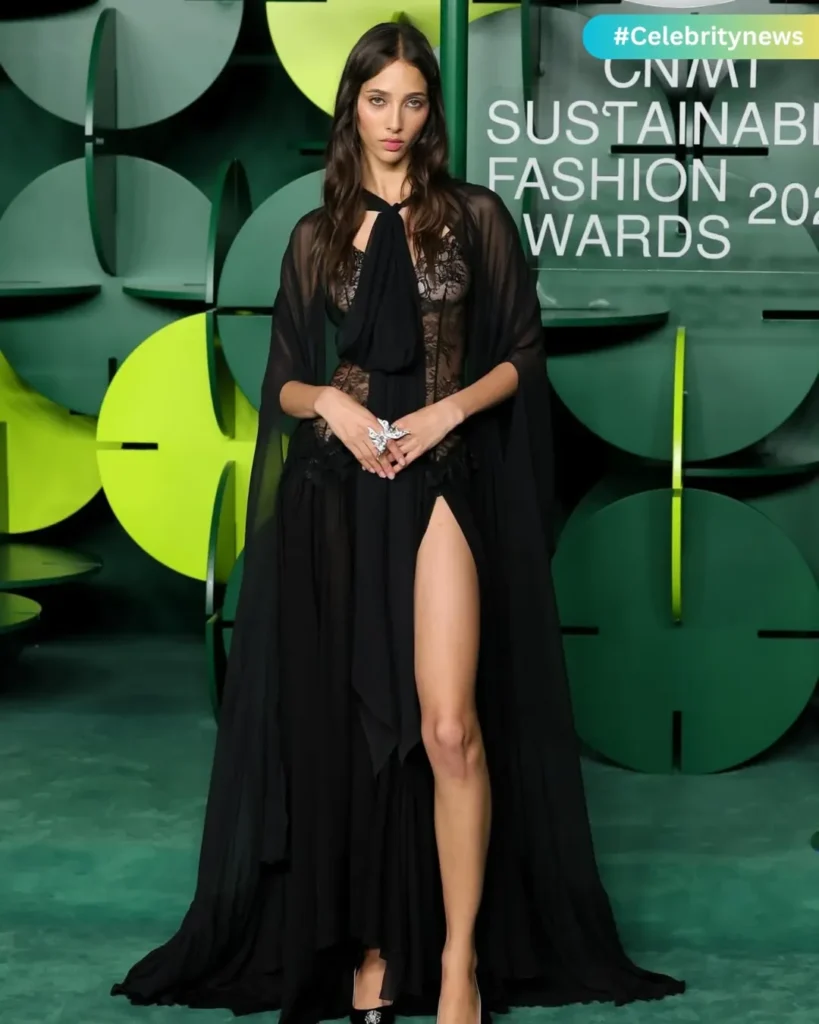
Milan may close its Fashion Week tents, but moments like that endure. For future generations, images from that night will be reference points: a black feathered gown, a raised platform, a host who knows ecology and elegance. Woodley’s silhouette may become part of sustainable fashion folklore—a blueprint for how red carpets might evolve.
We will remember her hosting, presenting, walking the steps in that architecture of starlight and rhetoric. We will replay her step: fabric shifting, jewelry anchoring, conviction in her posture. And we will remember that she did not simply attend. She inhabited.
What It Says About Fashion’s Future
The 2025 CNMI night speaks of fashion’s possible shift: from showroom fantasy to humane endeavor. It proposes that red carpets carry consequence. That couture can be archival yet urgent. That craftsmanship can be a tool for awareness. That celebrities are more powerful when they connect garments to values.
When stars like Woodley, Monaghan, Williams step into that role, they recalibrate glamour. They reclaim it. Not as superficial, but as instrument. Not as escape, but as engagement.
When the curtains fell, and the lights dimmed, the gowns hung quiet in the wings. The applause ebbed. But the imagery remained: layered black wings at Milan’s threshold. A sage whisper beside it. A platform speaking not just in applause but in legacy.Shailene Woodley didn’t wear feathers to fade. She wore them to rise. And in doing so, she invited everyone present—and watching—to consider: how will fashion fly, tomorrow?

